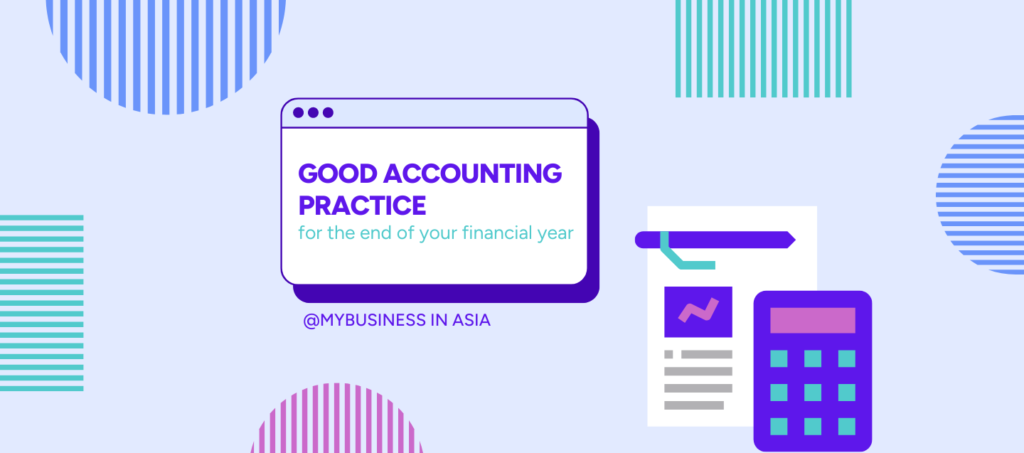
The conclusion of the fiscal year holds significant importance for finance teams, marked by intense pressure and heightened demands. On average, it takes about 25 days for accounting teams to finish closing the year. This period also lines up with monthly and quarterly reports, adding to the workload and stressing out accountants.
One simple way to ease the pressure and work better during this time is by following a clear plan. In this article, we’ll provide all the good accounting practices you need to take for a successful year-end closing cycle, which includes:
- Enter your income with your related expenses
- Provision for your staff bonus
- Provision for your staff annual leaves
- Annual invoices (such as insurance or membership subscriptions)
- Conclusion
Enter your income with your related expenses
We frequently see bookkeeping done on the sole basis of invoices and receipt date. Accounting is more than that. For each project you are working on, your income and your expenses need to be entered in the same period (usually same month). At the end of the year, you need to ensure that every piece of income has its related expense properly entered. For instance, if you are in the import-export business, you would not want the sale of a good to your client to be registered as an income in December 2023, while the purchase of the same good from your supplier be registered as an expense in January 2024. This will cause a higher revenue and probably increase your tax burden. Similarly, if you bought an item in December 2023 and sell it to your client right after but only invoice in January 2024, your gross margin will be incorrect and – as a result , you might not have the perfect picture of your company’s true financial performance.
It is possible that your supplier has yet to invoice you for the purchase. If this is the case, inform your accountant (or hire accouting services) and discuss the possibility to book a provision on a bill that should have been received.
Whether you are in service or trade, you need to relate each income and expenses and ensure that before you close your financial year, they have been properly entered together. We call that a cut-off.
Provision for your staff bonus
Your staff might be entitled to certain bonuses, such as thirteen months, commission on sales, bonus on reaching KPIs, etc. Generally, such bonuses are not paid at the end of the year but within the following year. If they relate to work done in the previous year, they will need to be accounted for, in the year. We generally see two forms of bonuses :
- Contractual bonuses are bonuses or commissions paid in accordance with the terms of a contract of service and cannot be withdrawn by the employer. It can be stated in the employment contract that an employee will be paid a thirteenth month or a bonus for reaching a certain KPI. Such bonuses are not discretionary and become payable within the year the employee meets the condition, even if they are paid later in the following year.
- Discretionary bonuses are bonuses that are subject to the employer’s decision. There is no legal requirement for the employer to pay such bonuses. Similarly, we believe that if such bonuses are paid to compensate an employee’s work done in the past year, then they should be entered in that year.
You can share the bonuses that you intend to pay with your accountants and decide with them to enter an accrual. For discretionary bonuses, if you ultimately decide not to pay them within the following year, you can always return the provision within the course of the following year. There is no obligation to pay a discretionary bonus after your accountant books an accrual at the end of the year.
Provision for your staff’s annual leaves
We are aware that most of your staff might have unutilized leave at the end of the year. Some will be lost while some leaves could be carried forward to the following year. If the latter is applicable, then you will need to discuss with your accountant if it is relevant to accrue them in your account at the end of the year. Indeed, please be reminded that your employees’ unutilized annual leaves might become an expense for you. Therefore, it might be relevant to arrange with your staff to have all their leaves taken before the end of the year.
Annual invoices (such as insurance or membership subscriptions)
Some of your suppliers might issue a bill within the financial year that might cover a long period, sometimes up to 12 or 24 months. If this is the case, your accountant should not enter the full invoice at face value in your account, but they should divide the full amount by the number of months it covers and enter the result monthly from the date of commencement of the services/ subscription until the end. This is particularly true for membership subscription invoices, software, or insurance. If you have such invoices to book, please review them with your accountant.
Other items which should be reviewed with your accountant are as follows:
- New financial standards for rental
- Depreciation on purchase of fixed assets (computer, printer, phone, etc.)
- Office renovation
Conclusion
Conducting year-end closing is integral to business operations, ensuring that financial statements such as balance sheets, profit and loss statements, and cash flow statements accurately depict the company’s financial status. This practice is crucial not only for small businesses but especially for publicly traded companies.
Year-end closing also readies businesses for potential audits and equips owners and managers with vital insights to make well-informed decisions. For a smoother closing procedure, consider reaching out to MBiA.


